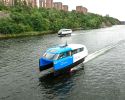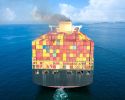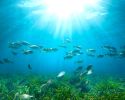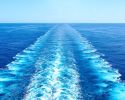New sensors increase safety at sea

Sensors developed within the automotive industry are getting better and cheaper. Can shipping take a free ride and use them to increase the safety of ships? According to the results from an innovation project carried out within the Swedish Transport Administration's industry program Sustainable Shipping, this is absolutely possible.
In the automotive industry, great resources have long been invested in developing self-driving cars. Some technology companies in the shipping industry have not wanted to be worse and a couple of years ago, there was a lot of buzz about the autonomous ships of the future the industry press. But who needs self-propelled ships? There was no major demand (except in some smaller segments) and in Sweden we no longer even talk about autonomous ships. Instead we speak about smart ships - about how digitalization and new technology can make the shipping of the future safer and more efficient.
“Manned ships will remain within the foreseeable future. But the technological development that has taken place and still takes place in the automotive industry, while the performance of sensors both increases and becomes cheaper, enables the technology to also work at sea”, says Robert Rylander, a researcher at RISE and one of the authors behind the report.
It is thus security that becomes more "automated", something that can be described as happening in three steps. First, sensors such as LiDAR (Light Detection and Ranging) and optical cameras can be used for navigation support for manned shipping.
“Today's optical system is better than the human eye under certain conditions. You can see further with them and they work in different visibility and light conditions. But above all, the combination of different types of camera techniques or lasers can give an extra eye on all the time, which together see 360 degrees around the boat.”
In step two, today's autopilots are given increased functionality and will be able to take into account more factors than just keeping course and position. They could be integrated in the sense that they can communicate with the sensor system and, based on the detection and identification of other objects, be advisory to the navigator. A kayak that can get in the way, for example, must be able to be detected and positioned, as well as dangerous grounds and islands, while navigation marks must be readable.
“With the camera technology, LiDAR and radar technology available today, a navigation aid could be developed that works excellently, especially in coastal shipping and inland waterways.”
Other application areas that have been studied are maneuvering in ports and mooring/departure at quay. There is also potential in these areas, but the complexity is greater. When the ships move slowly, forwards, backwards and to the side, vibrations can occur which affect the sensors. In port, there is also a lot of traffic and land infrastructure as buildings and strong light sources can be challenging for several sensor sets.
So how long does it take before the systems are on the market?
“In different places, for example in Norway and Finland, tests are done with autodocking. As long as there is a competent navigator on board, I think it's pretty easy to get these systems certified”, says Robert Rylander.
-
 NextWave – en podd som ska locka unga
NextWave – en podd som ska locka unga -
 Ny studie: Eldrivna pendelbåtar kan effektivisera Stockholms kollektivtrafik
Ny studie: Eldrivna pendelbåtar kan effektivisera Stockholms kollektivtrafik -
 Sjöfartens utsläpp ökar
Sjöfartens utsläpp ökar -
 Sociala relationer påverkar val av bränsle
Sociala relationer påverkar val av bränsle -
 Sjöfartens omställning kräver ”mjukare” påtryckningar
Sjöfartens omställning kräver ”mjukare” påtryckningar -
 Hon hade avtalad tid med Kapten ynkrygg
Hon hade avtalad tid med Kapten ynkrygg -
 Lighthouse omvärldsanalys 2025 – osäkerhet och tullar präglar sjöfarten
Lighthouse omvärldsanalys 2025 – osäkerhet och tullar präglar sjöfarten -
 Se seminariet Shipping in the Marine Environment
Se seminariet Shipping in the Marine Environment -
 Vad betyder egentligen de 90 procenten?
Vad betyder egentligen de 90 procenten? -
 Hålla där...
Hålla där...

